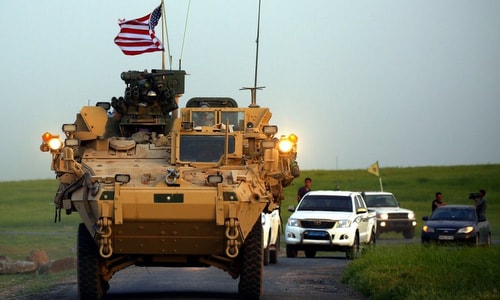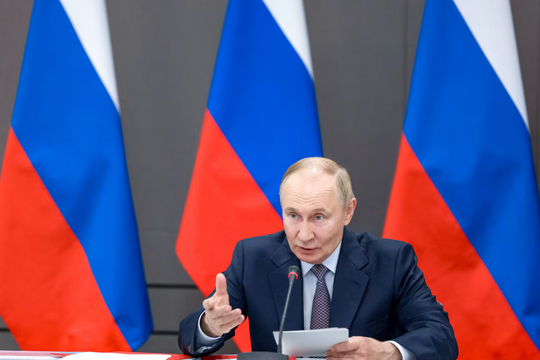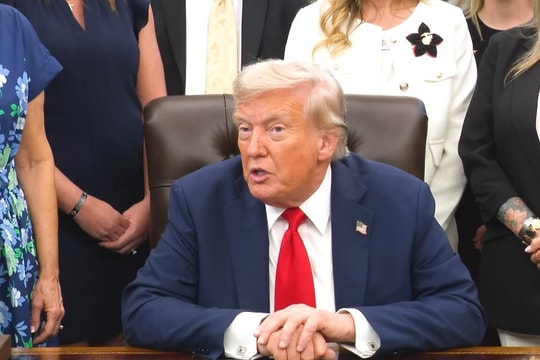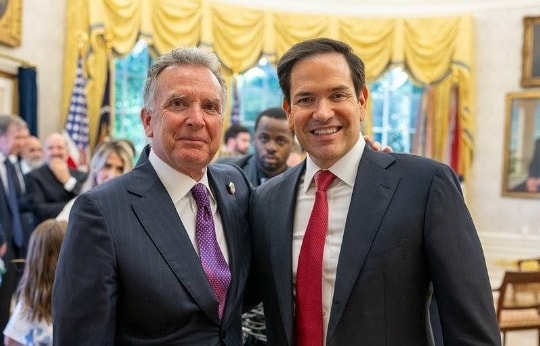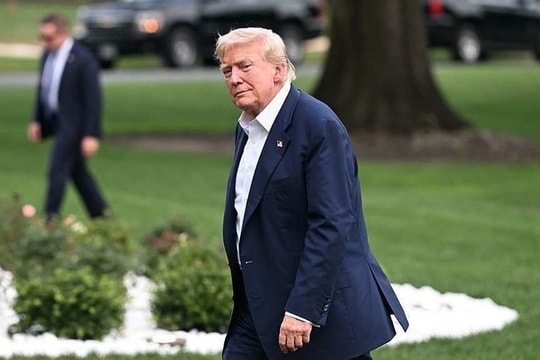Why President Trump wants to withdraw troops quickly from Syria
Trump appears to want to avoid direct conflict with Türkiye, as well as assert his power.
US President Donald Trump announced on Twitter on December 19 that the US "has defeated the self-proclaimed Islamic State (IS) in Syria", seemingly referring to the withdrawal of troops as promised during the election campaign. White House spokeswoman Sarah Sanders said Washington had begun to bring troops home, but did not specify whether this included all 2,000 US troops in Syria.
A US official said it would take the Pentagon about 60-100 days to bring all US forces in Syria home. Analysts have made many comments about the reasons why Washington decided to withdraw troops so suddenly and quickly, according toMilitary Times.
Military expert Kyle Kempfer said the move comes amid growing tensions between Washington and Ankara, which could lead to conflict on Syrian territory. The Turkish military wants to enter Syria, while US-backed Kurdish militias want to prevent this. The US has struggled for months to avoid offending both sides.
"A confrontation between the US and Türkiye, a key ally in the North Atlantic Treaty Organization (NATO), would cause a serious geopolitical crisis in the world's largest military alliance," Kempfer assessed.
Northern Syria has been a focal point in 2018, with a mix of rebel and insurgent forces backed by multiple countries. The US has 2,000 troops, mostly special forces, deployed to prevent the rise of IS. They are also playing a role in preventing clashes between Kurdish militias and the Turkish military.
A US withdrawal from Syria could cede control to Türkiye, easing tensions between the two NATO members. However, it would also mean Washington abandoning the Kurds, who have played a key role in defeating IS on the ground.
|
US and YPG special forces convoy in northern Syria. Photo:Reuters. |
With US support, the Syrian Democratic Forces (SDF), with the core being Kurdish militias, have recaptured many territories in eastern Syria from IS, increasing their influence in the northeastern region bordering Türkiye.
However, this move angered Turkish leaders, because they consider the Kurdish militia (YPG) of the SDF as a security threat. The YPG has close ties with the Kurdistan Workers' Party (PKK), an armed group listed as a terrorist by Ankara and Washington.
The US does not consider the YPG a terrorist group, but the Pentagon understands Türkiye's anger. "Türkiye has legitimate security concerns. Its leadership has been a great supporter of the campaign to defeat ISIS by allowing us to use Incirlik Air Base. Where we disagree is our cooperation with the SDF," US Defense Secretary Jim Mattis said in January, stressing that the PKK has destabilized southeastern Turkey for decades.
The US has not solved the root of the problem, but has often used the "push and pull" trick with Turkey for more than a year. Every time tensions between Washington and Ankara have eased, Turkish President Recep Tayyip Erdogan has escalated the situation. "A complete withdrawal of forces from Syria could be the solution that pleases Türkiye," Kempfer commented.
Joe Macaron, a scholar at the Arab Center in Washington, said the sudden withdrawal could be aimed at asserting US President Donald Trump's domestic power, as he is under pressure on key foreign policy issues related to Russia and Saudi Arabia.
President Trump has mentioned withdrawing troops, asserting that he does not see any strategic or financial value in maintaining the presence of US troops in Syria.
The Pentagon and the State Department then convinced the White House chief that the US needed to maintain forces in Syria. However, in April, Trump still set a six-month deadline for the US military to end the fight against IS. Earlier this month, the SDF took the town of Hajin, the last urban area controlled by IS. Trump believes it is time to withdraw from Syria, even though IS remains a threat.
|
US special forces deployed in eastern Syria earlier this year. Photo:Military Times. |
The decision represents a departure from Trump’s national security team. Over the past few months, conservatives led by National Security Adviser John Bolton and the military wing led by Secretary Mattis have argued differently for keeping troops in Syria.
Bolton has advocated increasing US forces in Syria to deter Iran, but has not offered any concrete steps to do so. In September, he tried to convince Trump to let Tehran play a role in Syria. However, Bolton's idea of an "Arab NATO" has been dismissed as unfeasible. Saudi Arabia is also not keen on supporting a long-term US presence in northern Syria.
In contrast, Secretary Mattis had warned that Bolton’s ideas could lead to a confrontation with Iran, arguing that the US should stay to fight IS and push for a solution to the conflict. He became increasingly isolated within the Trump administration, especially after the resignation of White House Chief of Staff John Kelly, his key ally. This led to Mattis’s decision to resign on December 20, shortly after Trump announced the withdrawal of troops from Syria.

